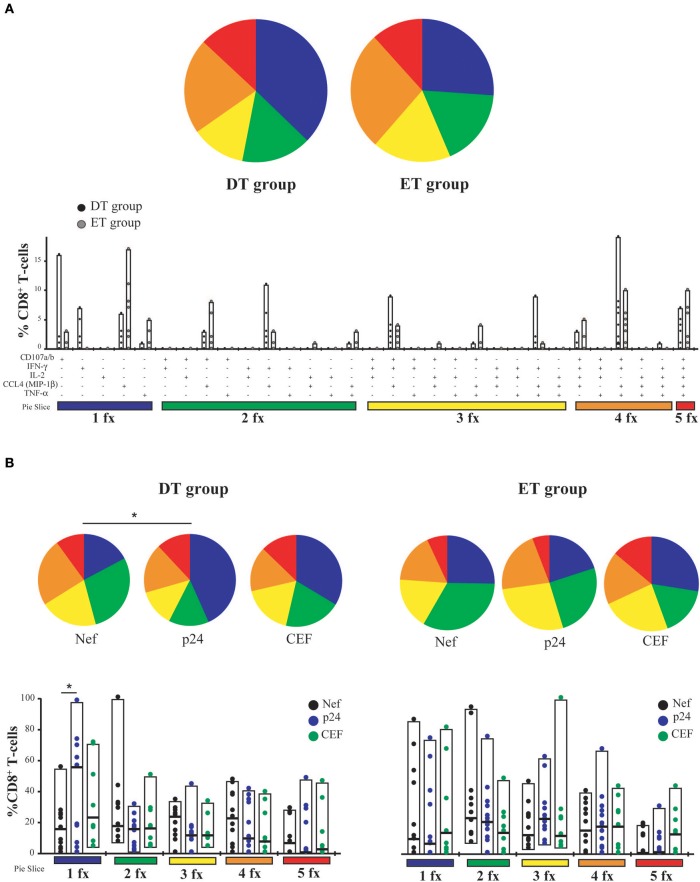Figure 3.
CD8+ T-cell polyfunctionality analysis after in vitro expansion with specific peptides. (A) Pies depict the distribution of mono-(blue), bi-(green), tri-(yellow), tetra-(orange), and penta-functional (red) cells within HIV specific CD8+ T-cells, for DT and ET subjects. Bar charts represent the proportion of HIV-specific CD8+ T-cells displaying each particular function or combination of functions (31 possible combinations of positive responses). The color code shown at the bottom mirrors the one shown in the pies. Black dots represent DT subjects and gray dots represent ET subjects. Boxes extend from min to max, horizontal bar within boxes represent median values (B) Polyfunctional profile for CD8+ T-cells with different specificities (Nef, p24 or CEF) within DT group (left panel) and ET group (right panel). This analysis was performed considering cells that were able to mediate either one, two, three, four, or five functions, regardless of any particular function or function combination (block analysis). Analyses were performed with SPICE software. When analyzing global distribution (pies) permutation tests were applied, instead when analyzing bar graphs, Student T-test were used. *p < 0.05. DT, Delayed treatment (N = 11 for Nef- and p24-specific responses, N = 8 for CEF-specific responses); ET, Early treatment (N = 12 for Nef- and p24-specific responses, N = 9 for CEF-specific responses).

